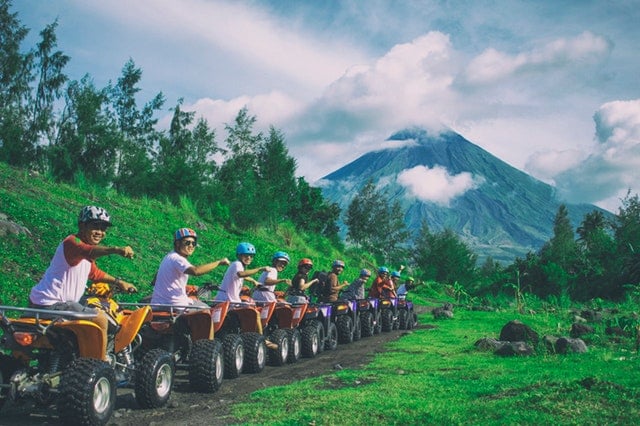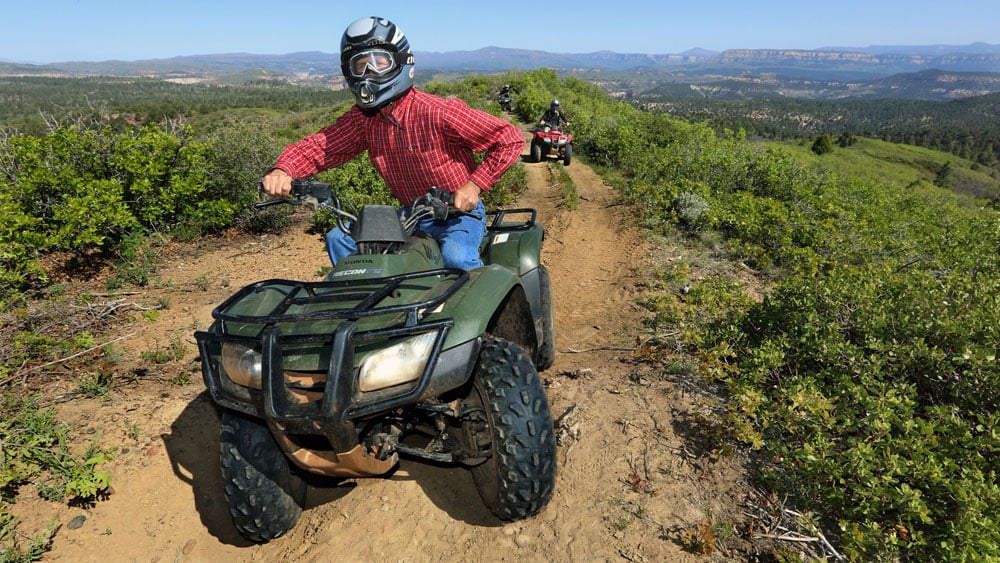Unlocking the Thrills: Mastering ATV Riding Techniques for Beginners
ATV Riding Techniques: Mastering the Art of Off-Roading

Body Positioning
To effectively browse via tough off-road surface, it is vital for ATV cyclists to regularly keep appropriate body placing. Preserving the appropriate body setting while riding an ATV not just boosts control and stability however additionally ensures the rider's security. By taking on the proper body positioning strategies, bikers can effectively disperse their weight, enhance their equilibrium, and decrease the threat of injuries or mishaps.
One trick element of appropriate body positioning is maintaining the feet on the foot pegs. Putting the feet on the foot secures enables the motorcyclist to preserve security and control over the ATV. The rider's knees should be slightly curved, giving a slight suspension to absorb shocks and maintain balance. In addition, the motorcyclist's top body should stay unwinded and adaptable, enabling smooth and fast activities when required. This includes maintaining a light grasp on the handlebars to keep control without excessive pressure.
Moreover, the motorcyclist's eyes ought to always be concentrated in advance, checking the surface and preparing for any type of challenges or changes in the route. By keeping a forward gaze, riders can make instant decisions and react suitably to challenging terrain.
Throttle Control
Structure upon the significance of appropriate body placing for ATV cyclists, understanding throttle control is a vital skill that makes it possible for riders to efficiently navigate through different off-road terrains. Throttle control describes the capability to regulate the amount of power provided to the ATV's engine. By recognizing exactly how to manipulate the throttle, bikers can make sure a regulated and smooth velocity, permitting them to browse barriers with precision.
Unexpected or jerky motions can cause the ATV to shed traction or end up being unsteady, making it hard to keep control. This technique permits the ATV to preserve a constant rate and gives better grip, reducing the danger of crashes.
In addition to smooth modulation, bikers should also find out exactly how to stabilize the throttle with various other riding techniques, such as body positioning and braking. As an example, when climbing high hillsides, cyclists need to use adequate throttle to preserve momentum without overpowering the ATV or creating wheel spin. In find out here now a similar way, when coming down high slopes, motorcyclists ought to utilize the throttle in combination with proper body stopping and positioning to maintain control and protect against the ATV from gliding or toppling.

Braking Methods
A vital aspect of ATV riding methods is grasping effective stopping strategies. When it pertains to off-roading, knowing how to brake properly can make a significant difference in your safety and security and control over the car. One of the most crucial braking methods is using the front brake even more than the back brake. The front brake provides most of the stopping power, so it is crucial to utilize it sensibly. It is important to keep in mind that extreme stopping with just the front brake can trigger the ATV to pitch forward, possibly leading to loss of control or even flipping over. It is recommended to use both brakes at the same time, yet with even more stress on the front brake. An additional essential method is to prevent locking the wheels while braking. Locking the wheels can lead to skidding, making it tough to preserve control. To stop this, press the brake bars gradually and release them a little if you feel the wheels securing. By understanding these stopping techniques, you can enhance your ATV riding skills and make sure a safe and satisfying off-roading experience.
Cornering Methods
One vital aspect of grasping ATV riding techniques is understanding effective cornering methods. Catching on an ATV can be tough, but with the right techniques, motorcyclists can navigate turns securely and effectively. The key to effective cornering is to preserve control of the ATV while maximizing grip and lessening the threat of toppling.
To implement an appropriate cornering method, cyclists ought to approach the turn at a proper rate, guaranteeing they are not going too sluggish or too rapid. It is critical to change the body weight towards the within of the turn, leaning into it to maintain equilibrium and security. This assists for the centrifugal force and maintains the ATV upright.
Additionally, motorcyclists should maintain their eyes concentrated on the exit point of the turn instead of the instant path in advance (ATV). This permits smoother and extra specific steering, as it assists the motorcyclist prepare for any obstacles or adjustments in surface
In addition, correct throttle control plays a substantial role in cornering. Cyclists must regulate the throttle efficiently, avoiding sudden velocities or slowdowns, which can cause loss of control.
Uphill and Downhill Riding
When browsing off-road surface, ATV riders should master the techniques for uphill and downhill riding to maintain control and make certain security. Downhill riding, on the various other hand, requires riders to lean back and move their weight towards the back of the ATV. By mastering the techniques for uphill and downhill riding, ATV motorcyclists can confidently take on various off-road terrains and enjoy a thrilling and secure journey.
Verdict
Finally, grasping the art of ATV riding requires a mix of body positioning, throttle control, stopping techniques, and effective cornering. Uphill and downhill riding additionally need particular abilities to browse securely. By implementing these methods, cyclists can improve their off-roading experience and improve their total control and safety and security on the ATV.
ATV Riding Techniques: Grasping look what i found the Art of Off-Roading is a thorough guide that delves right into the intricacies of understanding the skills required for off-road ATV riding. Whether you are a newbie or a knowledgeable rider, ATV Riding Techniques: Grasping the Art of why not find out more Off-Roading offers important recommendations to assist boost your off-road ATV riding abilities to the next level.
